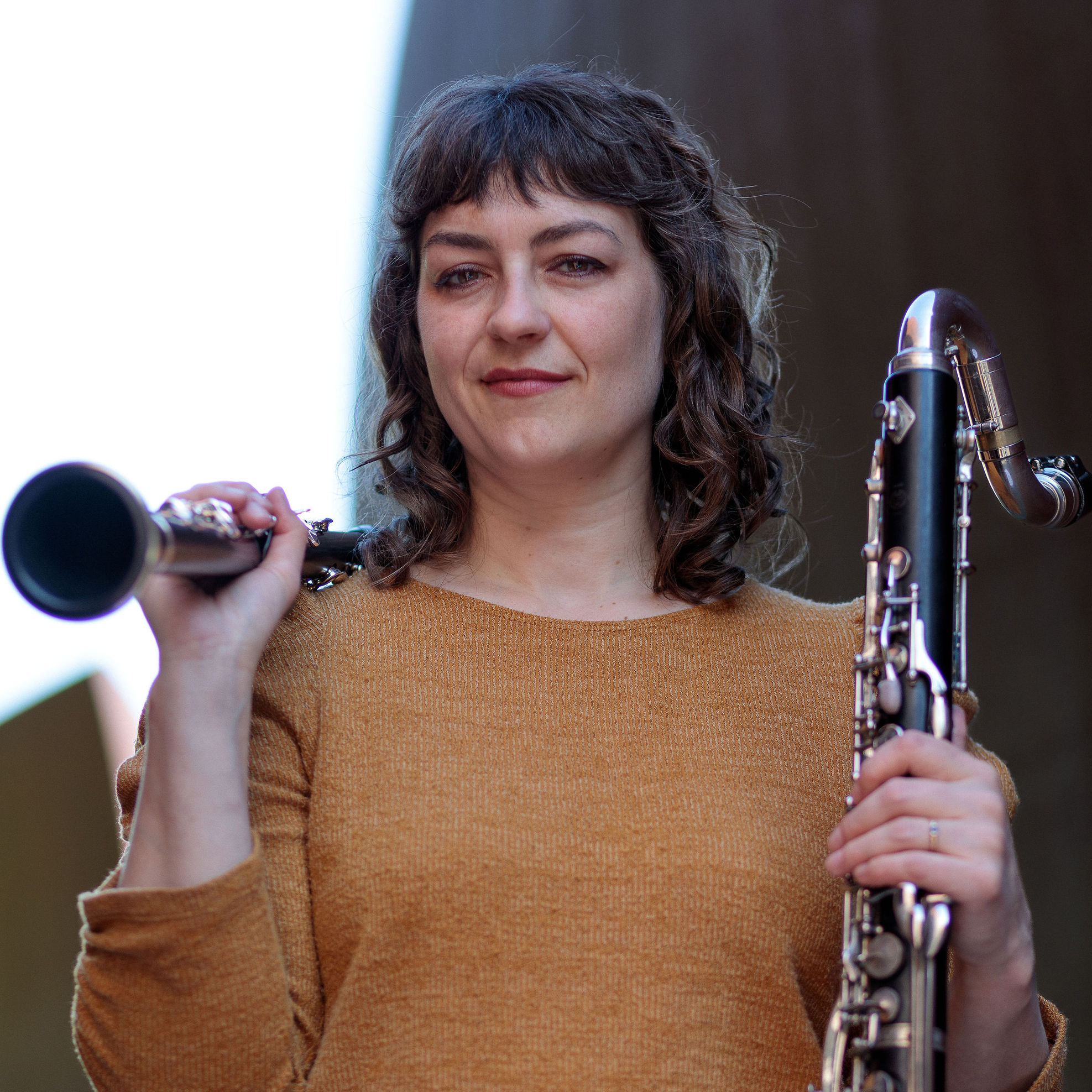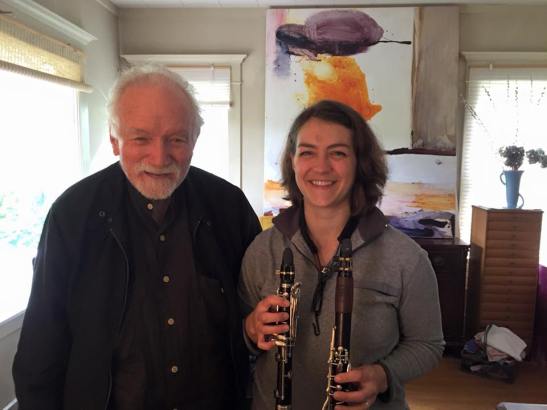(Note: I originally wrote this post at Signals for Images, the contemporary music blog to which I contribute.)
Last weekend, my clarinet/electronics duo Odd Partials (with Greg Dixon) put on a concert together with Seattle-based composer Marcin Pączkowski as part of the Wayward Music Series. This experimental series is run by new music organization Nonsequitur, and presents ten concerts a month – mostly contemporary acoustic/electronic music or experimental jazz – at the Good Shepherd Center, a community center in Seattle. This incredible music series is a huge catalyst for the experimental music scene in Seattle. Concerts are held at the Chapel Performance Space, which offers high ceilings, decent acoustics, flexible seating arrangements and professional audio equipment including six loudspeakers. Performers are not charged a fee for the use of the space unless they make a significant amount in ticket sales. What an amazing resource for the promotion of new music!
On our concert I played Greg Dixon’s Fractures for clarinet and computer (see above video from a previous performance), Marcin Pączkowski’s Study 2012 for bass clarinet and computer, and William O. Smith’s Solo for Clarinet with Delay System. Marcin performed his accelerometer-based piece for conductor and computer, and then he, Greg and I did a live improvisation combining the interactive systems from each of their clarinet pieces with the delay system from William O. Smith’s piece.
I could go into more detail about all the pieces on the program, but I’d really like to focus in on William O. Smith’s piece, because it’s been largely forgotten since Gerry Errante recorded it soon after it was composed in 1983, and I had the opportunity to work with Bill on interpretive and technical details of the piece. It’s a compelling work with many of his compositional hallmarks: multiple short movements, use of twelve-tone method for pitch material, rhythmic vitality, multiphonic register key trills, singing while playing, intoning/chanting, and the double clarinet. The double clarinet, created by putting a mouthpiece on the lower joint so you have two half-clarinets, is used only in the last movement and requires the player to play each half alternately (not simultaneously as in Smith’s Five Fragments for double clarinet.)
Solo for Clarinet with Delay System was written for a specific analog delay pedal – the MXR – but includes instructions allowing it to be adapted for any analog delay that has controls for blend/mix, length of delay, and repeat/feedback. (Of course, the work could also be performed with computer software that performs these controls.) I performed it with a Memory Man analog delay pedal. Each of the five short movements of the Solo calls for different settings, some with a short, dry delay, some much longer. When I met with Bill, I did find that the Memory Man had trouble getting a delay as long as he envisioned for a couple of the movements. What I did was for those movements was to turn up the feedback knob as high as I could without the sound getting out of control. This had to be carefully tested in the hall during dress rehearsal as I refined all my settings to work in the space.
The singing while playing was probably the biggest challenge of this piece. I have a pretty low alto singing register, but there was one phrase that called for a low C-sharp which I had to transpose up an octave. It worked out okay, but caused some instability in the clarinet pitch at times. Some of the rest of the low singing I could execute, but not loudly.
While working with Bill he observed that the clarinet sound was significantly more present than the singing, especially the way the delay was picking it up. We decided that since I couldn’t sing louder, the clarinet needed to be softer. It’s an odd physical sensation to try to decrescendo your clarinet sound while keeping your singing sound as loud as possible. You have two separate points of resistance, your vocal cords and the reed/mouthpiece. I found that it helped to put as much air as I could through my vocal cords, but loosen my embouchure so that the air going into the horn was slower and less focused. This helped to balance the voice and clarinet.
Another aspect of singing while playing that I had to refine while working on this piece was pitch accuracy. Have you ever sung a single pitch into the clarinet, without vibrating the reed, as you tried different fingerings? Depending on the fingering, the acoustics of the clarinet can alter your vocal pitch as much as a semitone! Especially on bass clarinet, you can even make your voice “trill” by doing a fingered trill. The point of this is, even if you are a decent singer, the acoustics of the instrument can make trying to tune your singing while playing feel like putting on makeup while looking into a funhouse mirror. You know how it’s supposed to sound, but the feedback you’re getting is skewed.
Pitch accuracy with this technique is really something that has to be worked out on a note-by-note basis. The Solo calls for many perfect fourths and fifths, and I found I often had to adjust my vocal pitch lower than expected to get the intervals in tune. The louder I played/sang, the higher my vocal pitch went, so I had to try to lower my singing pitch as I got louder. One basic tip I’d give to anyone working on singing while playing is to learn the playing part and get that on autopilot, so you can mentally focus on the sung pitches in performance, since that is the less familiar technique. Of course, if you were just singing a drone and playing lots of notes around it, you’d probably take the opposite approach.
One last note from working with Bill is that he really wanted a “musical” approach to his music, not a purely technical one. Despite the technology and the atonality, his preferred interpretive approach was one which heightened contrasts between dynamics and character of gestures and other musical materials. To me, this is why the music of William O. Smith is worth performing and, in some cases, rediscovering: the extended techniques and twelve-tone language are not just tricks and techniques; they are woven into a detailed fabric of musical expression.


Leave a Reply